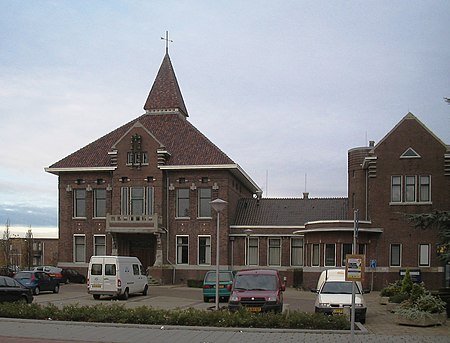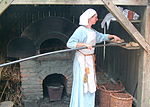Boskoop

Boskoop (Dutch pronunciation: [ˈbɔskoːp] (listen)) is a town in the province of South Holland. It was a separate municipality until it merged into Alphen aan den Rijn in 2014. The town had a population of 15,050 in 2012 and covers an area of 7.29 km2 (2.81 sq mi) of which 1.39 km2 (0.54 sq mi) is water. It's the world's biggest joined floriculture area. Boskoop is famous for its nurseries, particularly woody plant and perennial nurseries, of which some 774 are situated on long stretches of land, divided by narrow canals. Before World War II almost all transport was conducted using narrow boats. A few exceptionally high footbridges crossing some of the broader (main) canals remain from these days. Between the World Wars the transition was made from fruit culture to decorative garden plants and trees. As a source of technical knowledge about the art of growing decorative plants, Boskoop remains world-renowned and unique. The name "Boskoop" has been given to an apple cultivar (Belle de Boskoop) which is widely distributed in the Low Countries, to a grape variety (Boskoop Glory) and also to a variety of Calluna (Boskoop) and Weigela (Boskoop Glory) and blackcurrant ("Boskoop Giant").
Excerpt from the Wikipedia article Boskoop (License: CC BY-SA 3.0, Authors, Images).Boskoop
J.C. Bulkstraat, Alphen aan den Rijn
Geographical coordinates (GPS) Address Nearby Places Show on map
Geographical coordinates (GPS)
| Latitude | Longitude |
|---|---|
| N 52.066666666667 ° | E 4.65 ° |
Address
J.C. Bulkstraat 9
2771 JD Alphen aan den Rijn
South Holland, Netherlands
Open on Google Maps





